Match the important chemical given in column (A) with the chemical fomulae given in Column (B).
Column (A), Column (B)(a) Plaster of paris, (i)Ca(OH)2(b) Gypsum (ii)CaSO4.12H2O(c) bleaching powder (iii)CaSO4.2H2O(d) Slaked lime (iv)CaOCl2
To solve the problem of matching the chemicals in Column (A) with their corresponding chemical formulae in Column (B), we can follow these steps:
1. Identify the Chemical for (a) Plaster of Paris:
- Plaster of Paris is known to be calcium sulfate hemihydrate.
- The chemical formula for Plaster of Paris is CaSO4⋅12H2O.
- Match: (a) Plaster of Paris → (ii) CaSO4⋅12H2O
2. Identify the Chemical for (b) Gypsum:
- Gypsum is calcium sulfate dihydrate.
- The chemical formula for Gypsum is CaSO4⋅2H2O.
- Match: (b) Gypsum → (iii) CaSO4⋅2H2O
3. Identify the Chemical for (c) Bleaching Powder:
- Bleaching powder is calcium oxychloride.
- The chemical formula for Bleaching Powder is Ca(OCl)2.
- Match: (c) Bleaching Powder → (iv) CaOCl2
4. Identify the Chemical for (d) Slaked Lime:
- Slaked lime is calcium hydroxide.
- The chemical formula for Slaked Lime is Ca(OH)2.
- Match: (d) Slaked Lime → (i) Ca(OH)2
Final Matches:
- (a) Plaster of Paris → (ii) CaSO4⋅12H2O
- (b) Gypsum → (iii) CaSO4⋅2H2O
- (c) Bleaching Powder → (iv) CaOCl2
- (d) Slaked Lime → (i) Ca(OH)2
- Plaster of Paris is known to be calcium sulfate hemihydrate.
- The chemical formula for Plaster of Paris is CaSO4⋅12H2O.
- Match: (a) Plaster of Paris → (ii) CaSO4⋅12H2O
- Gypsum is calcium sulfate dihydrate.
- The chemical formula for Gypsum is CaSO4⋅2H2O.
- Match: (b) Gypsum → (iii) CaSO4⋅2H2O
- Bleaching powder is calcium oxychloride.
- The chemical formula for Bleaching Powder is Ca(OCl)2.
- Match: (c) Bleaching Powder → (iv) CaOCl2
- Slaked lime is calcium hydroxide.
- The chemical formula for Slaked Lime is Ca(OH)2.
- Match: (d) Slaked Lime → (i) Ca(OH)2
- (a) Plaster of Paris → (ii) CaSO4⋅12H2O
- (b) Gypsum → (iii) CaSO4⋅2H2O
- (c) Bleaching Powder → (iv) CaOCl2
- (d) Slaked Lime → (i) Ca(OH)2
Similar Questions
Match the important cvhemicals given in column I with the chemical formula given in column II.
 View Solution
View SolutionMatch the polymer given in Column I with their chemical names given in Column II
 View Solution
View SolutionMatch materials given in column I with the polymers given in column II
 View Solution
View SolutionMatch the medicine given in Column I with their uses given in Column
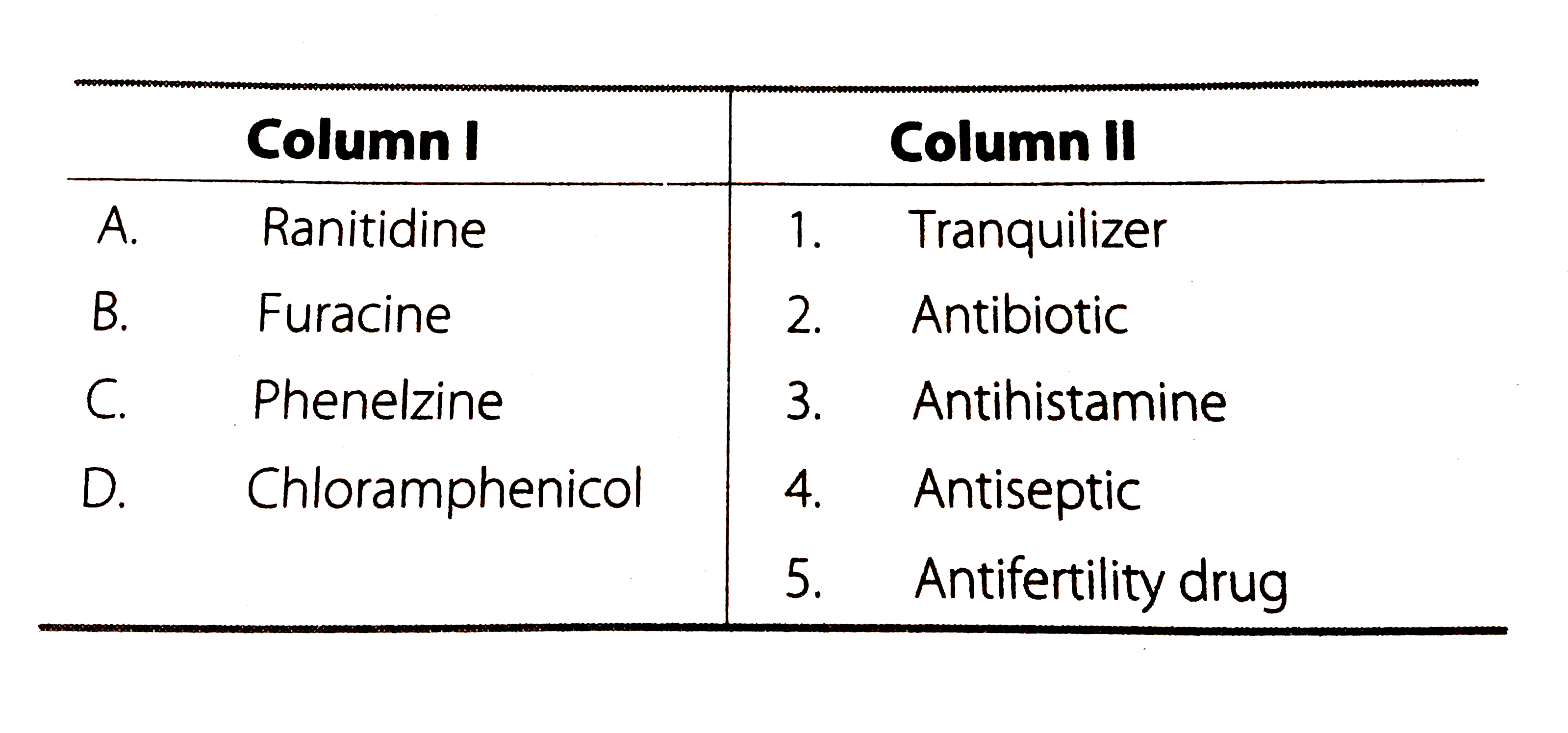 View Solution
View SolutionMatch the catalyst given in Column I with the processes given in Column II.
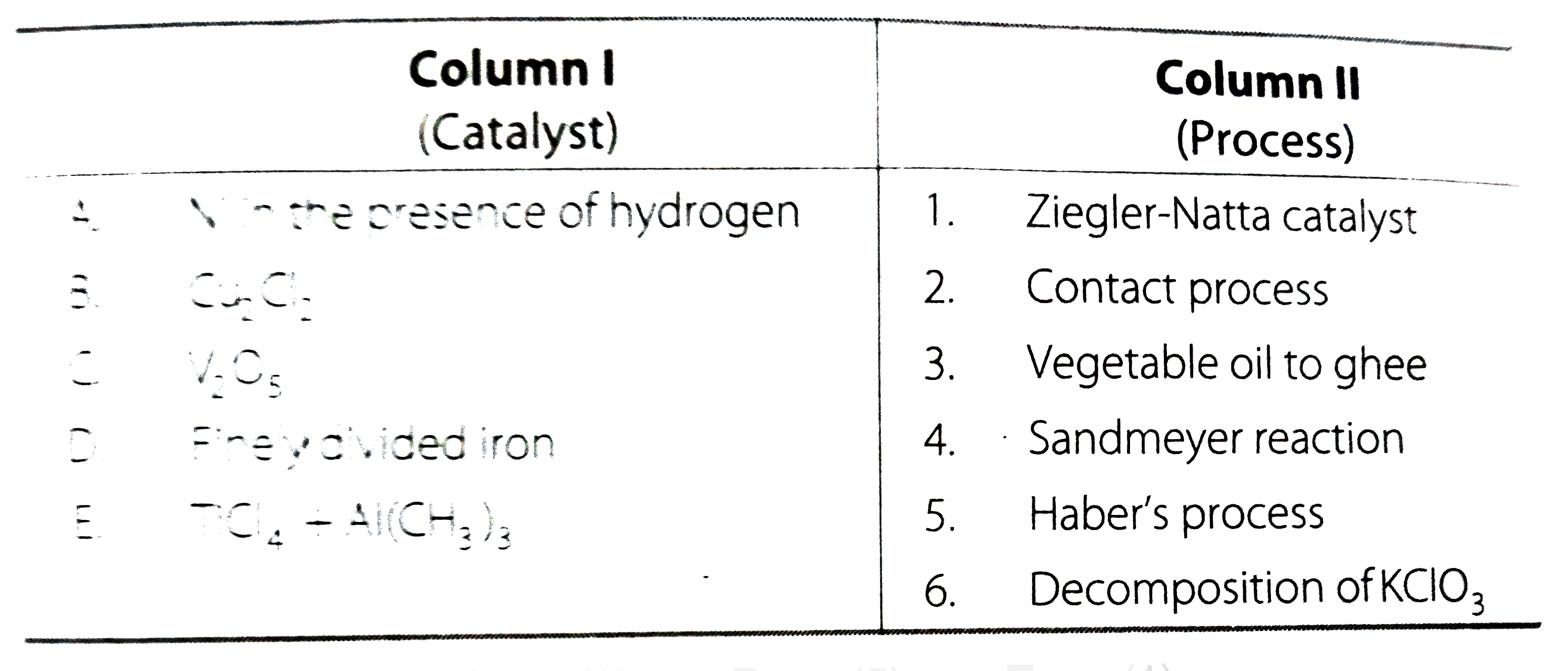 View Solution
View SolutionMatch the statement given in Column I with the phenomenon given in Column II.
 View Solution
View SolutionMatch the organisms given in column I with the vegetative propagules given in column II.
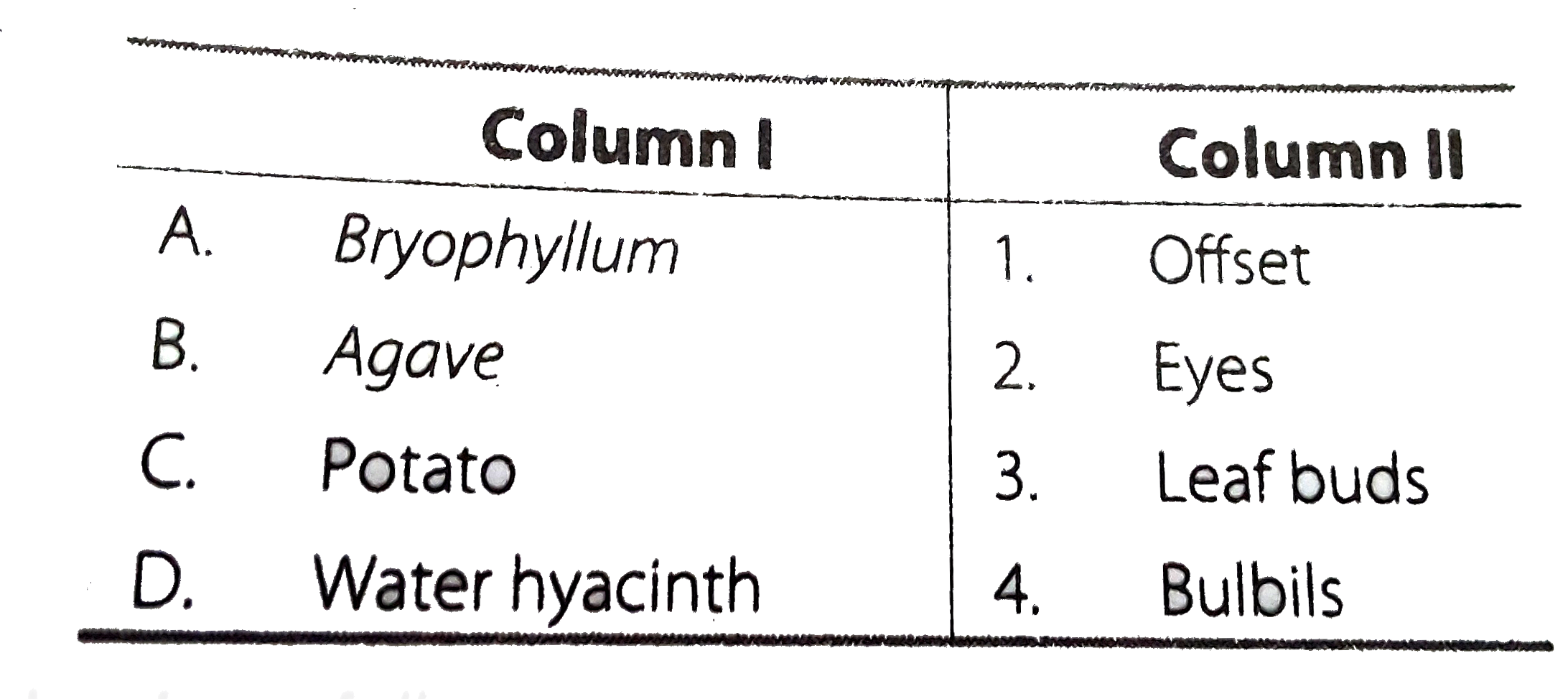 View Solution
View SolutionMatch the polymers given in column I with their commerical names given in column II
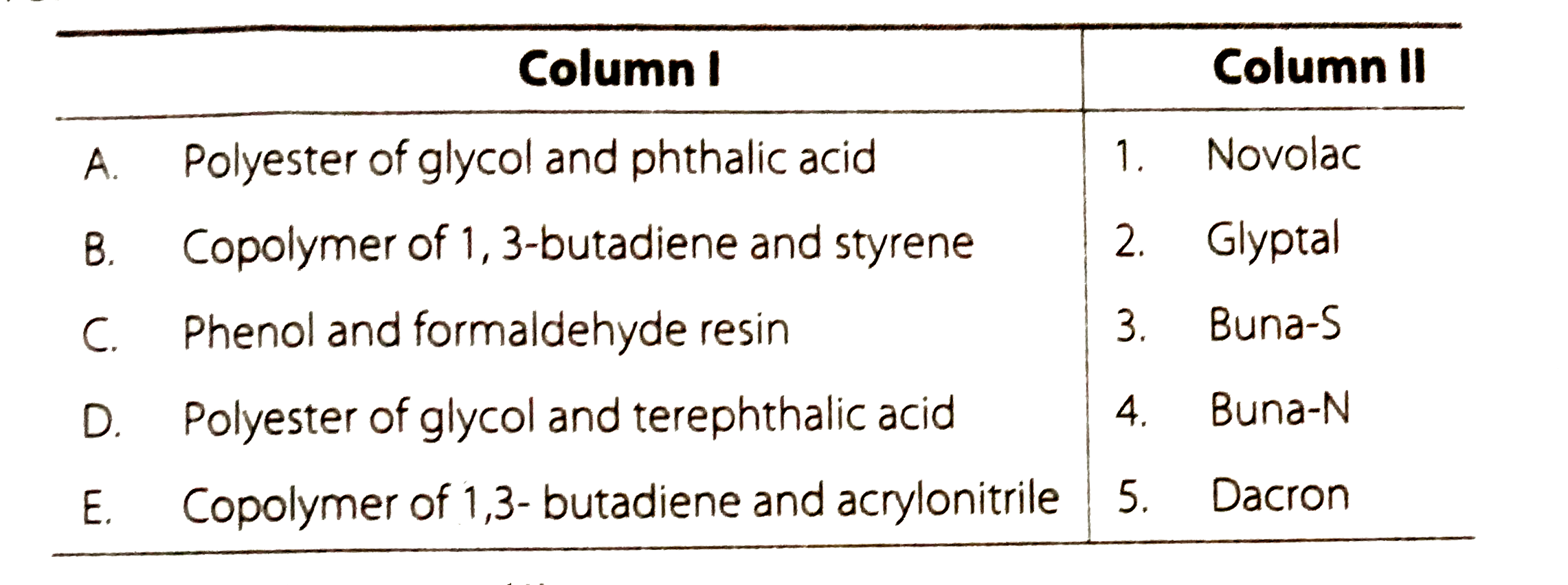 View Solution
View SolutionMatch the property given in Column I with the element given in Column II.
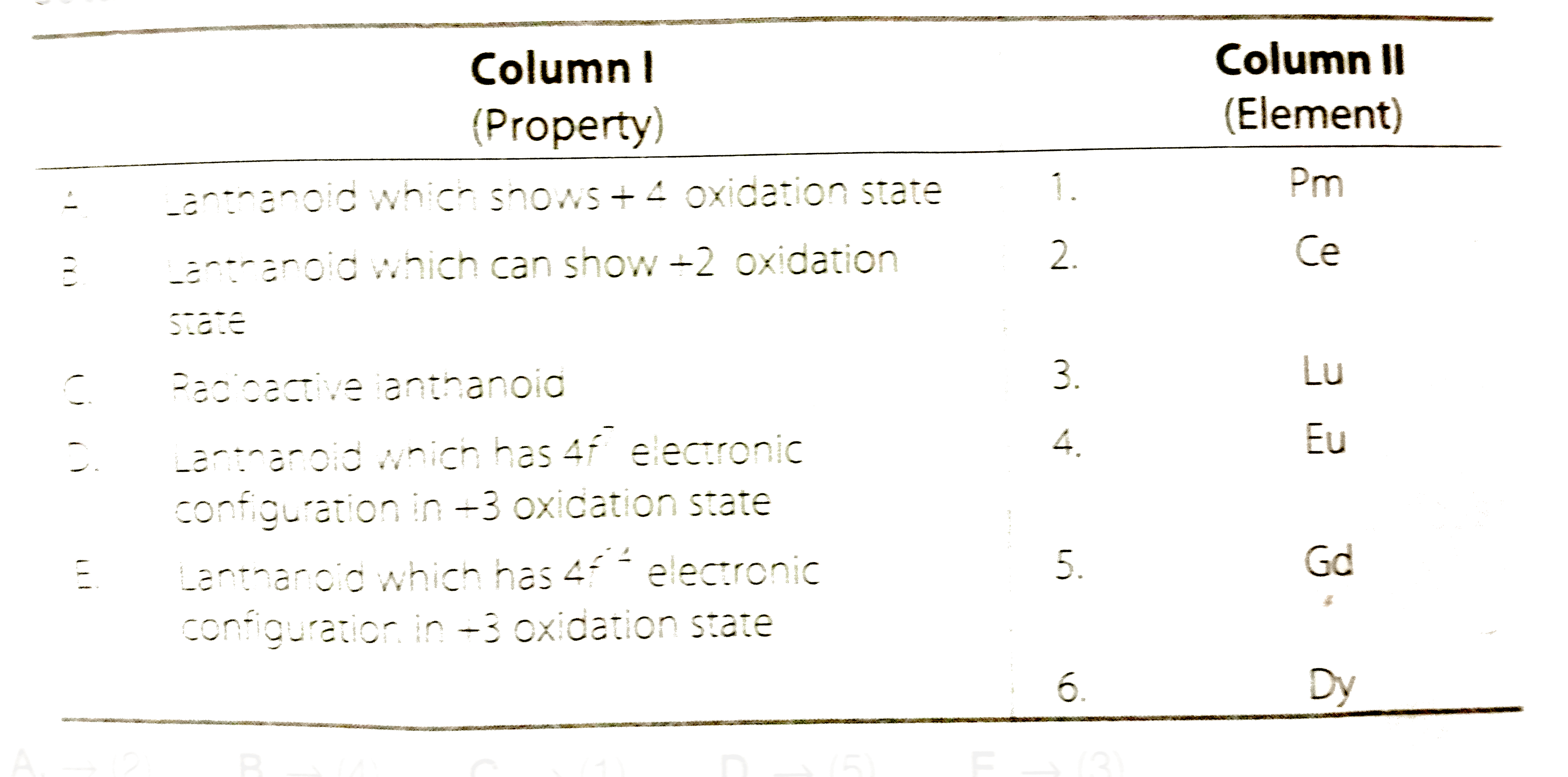 View Solution
View SolutionMatch the compounds given in column I with the effects given in Column II
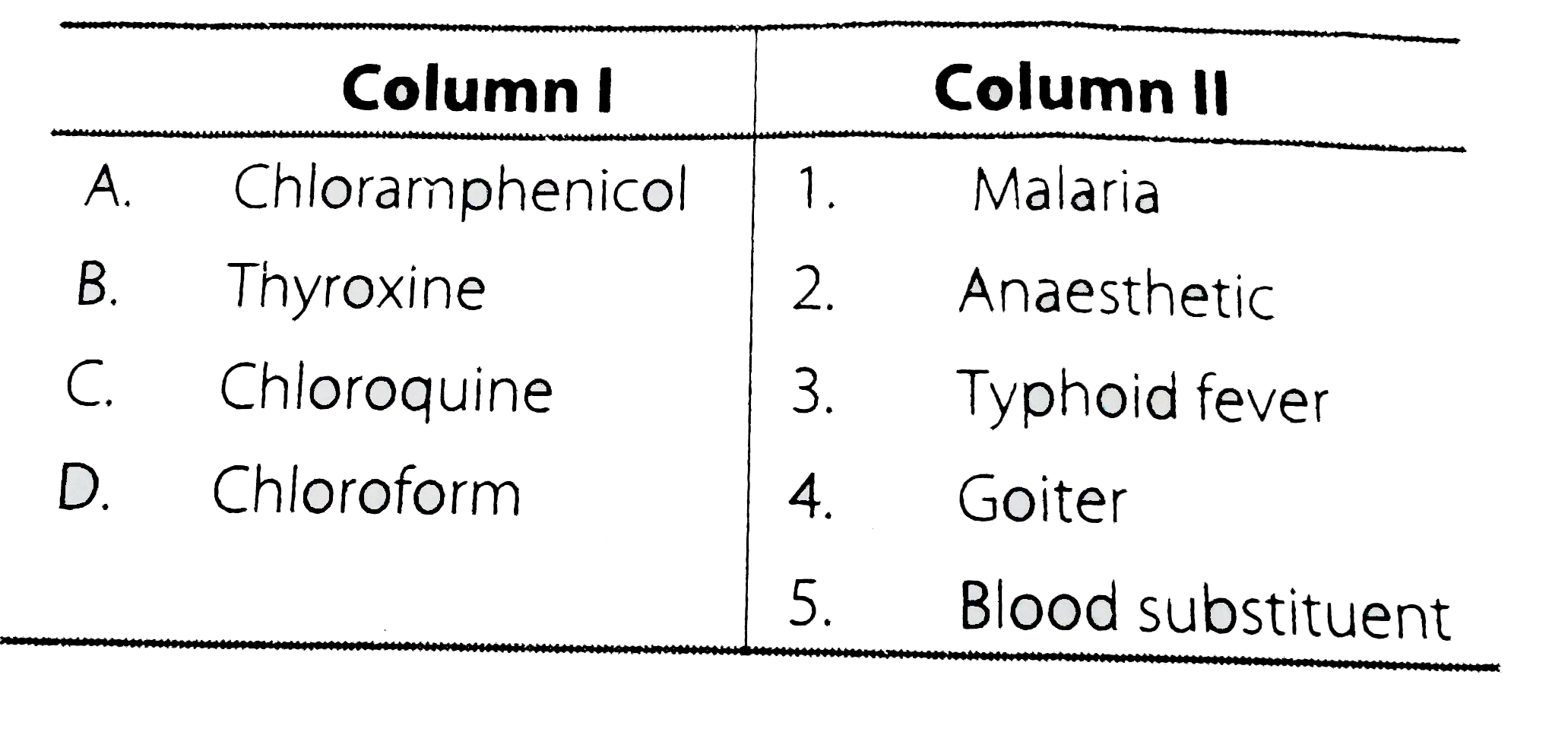 View Solution
View Solution

